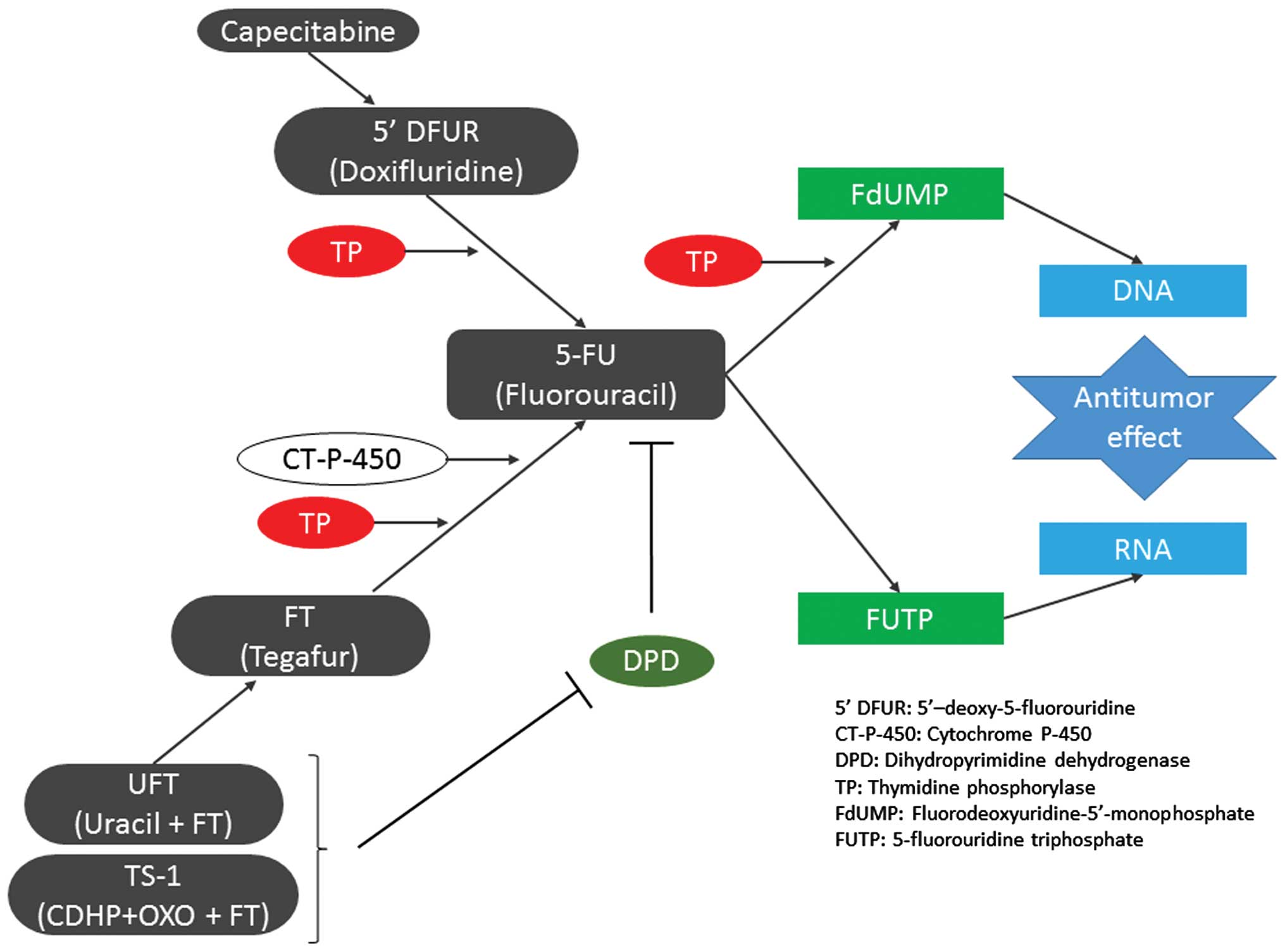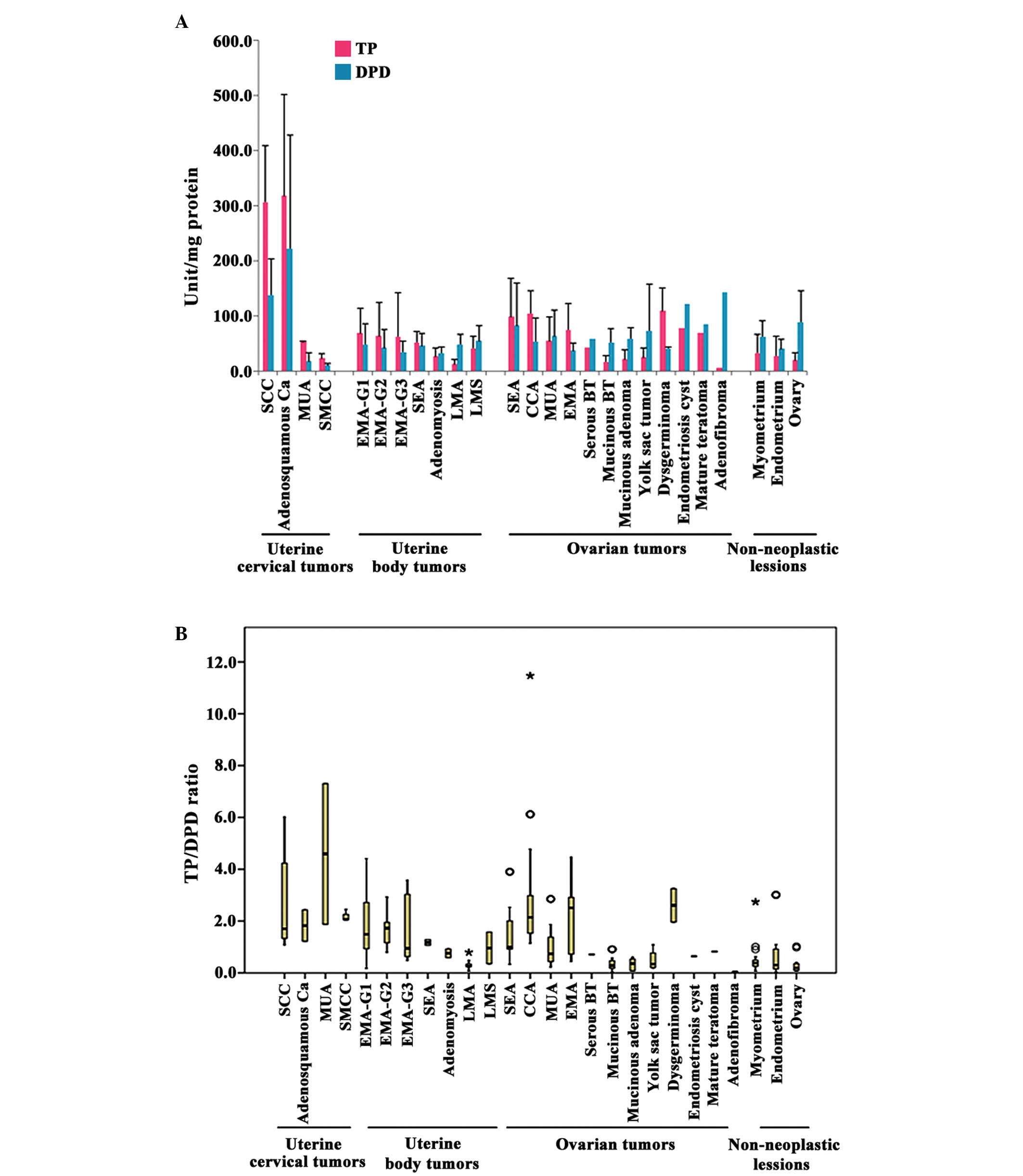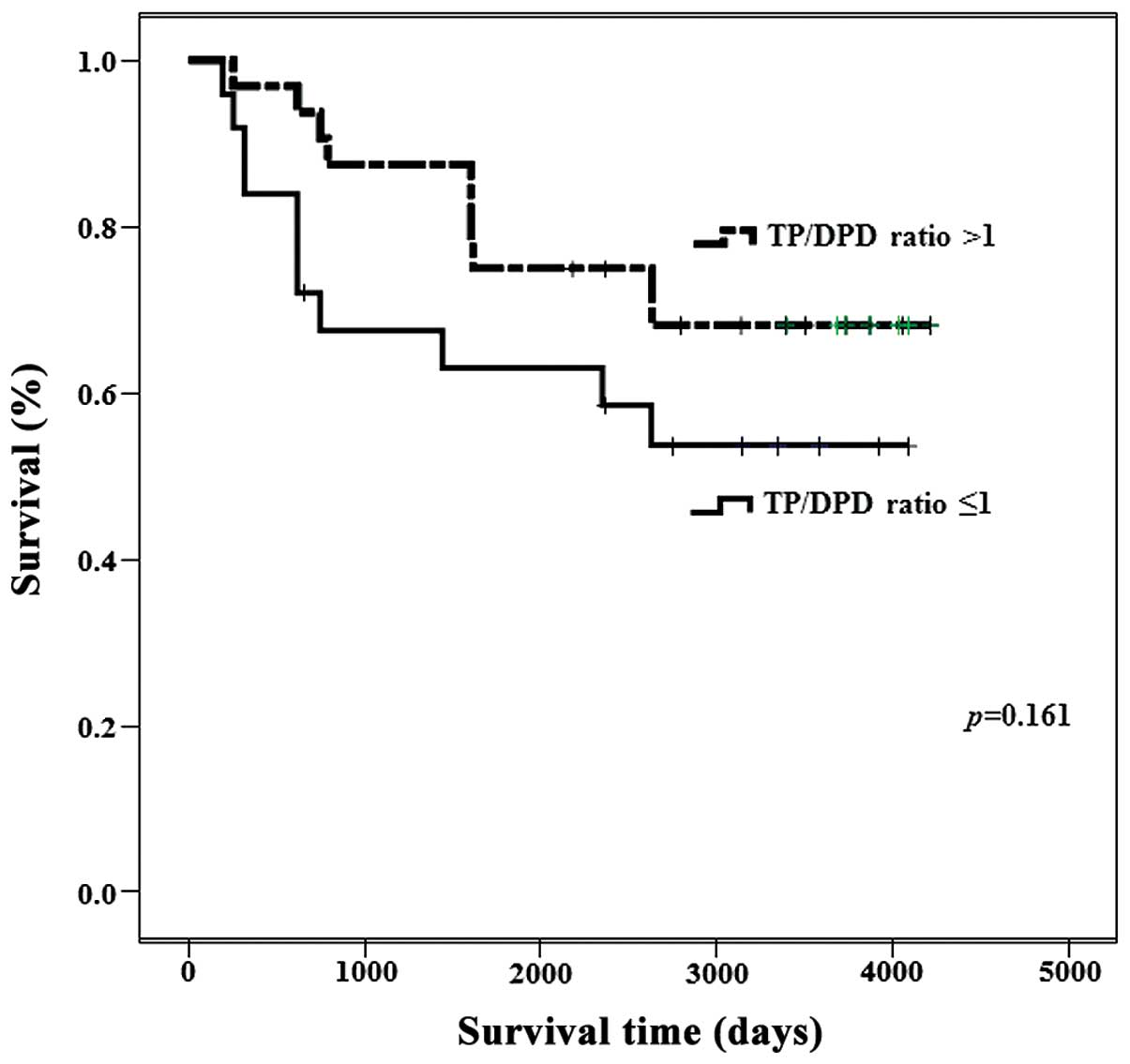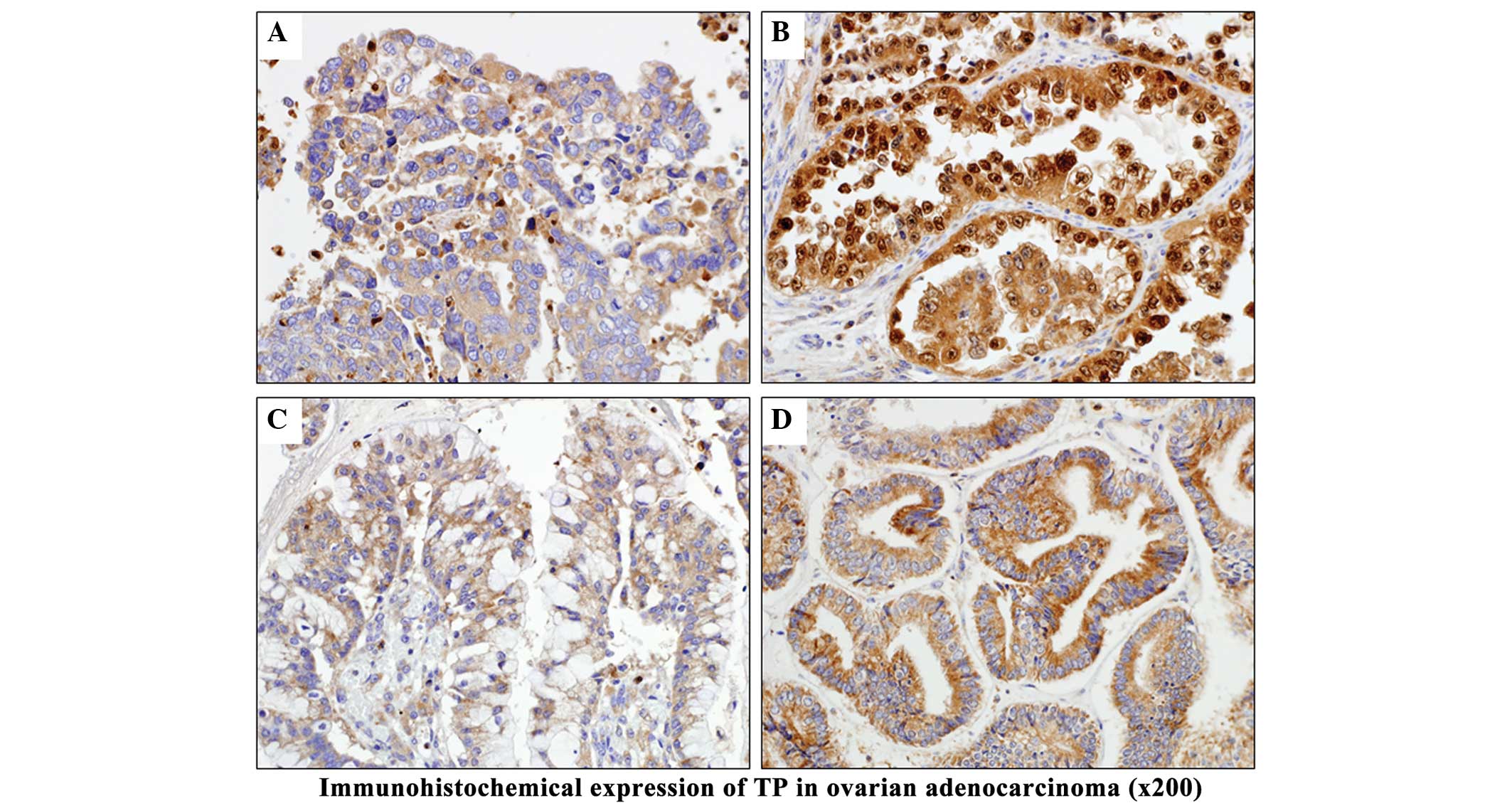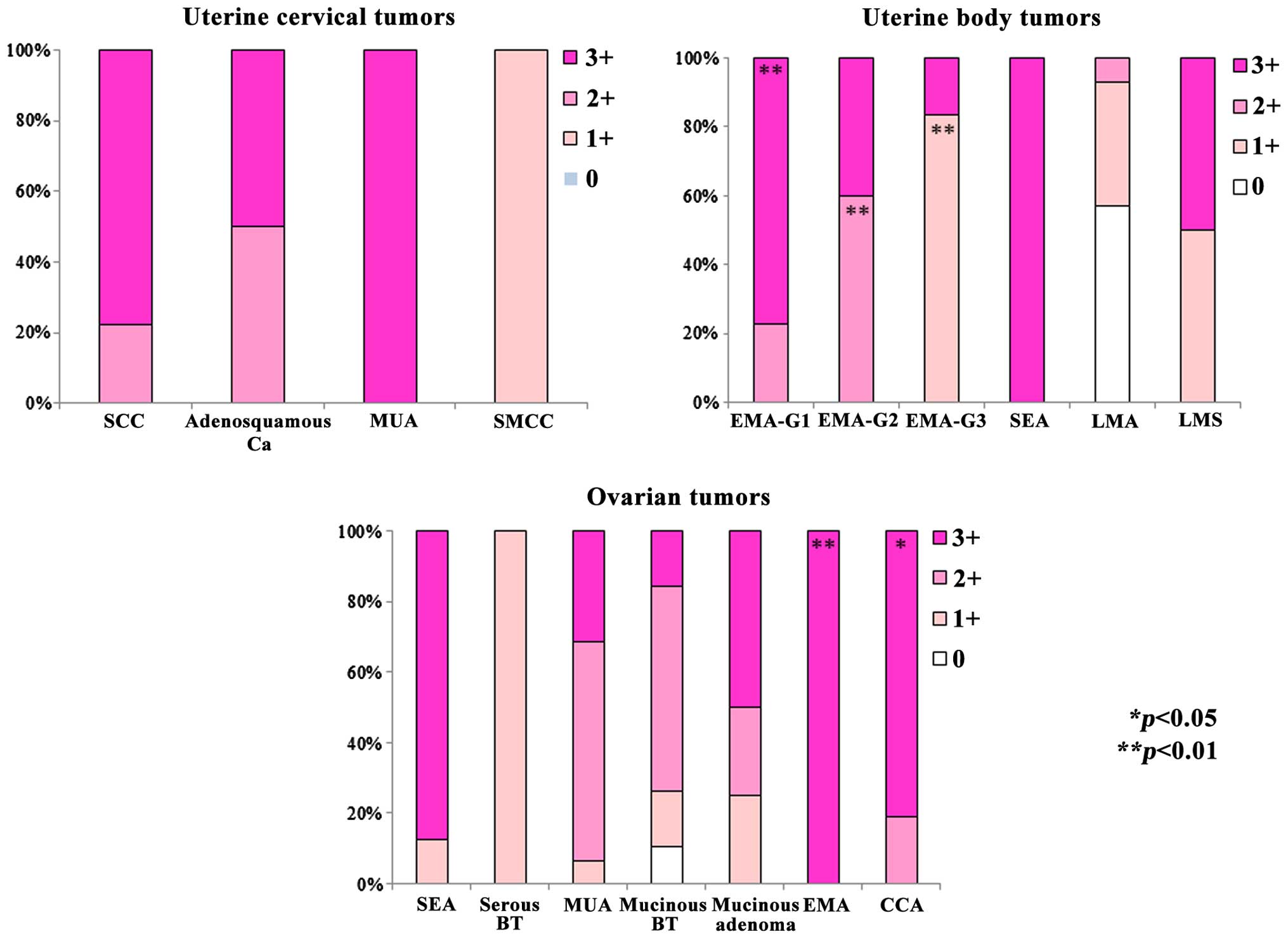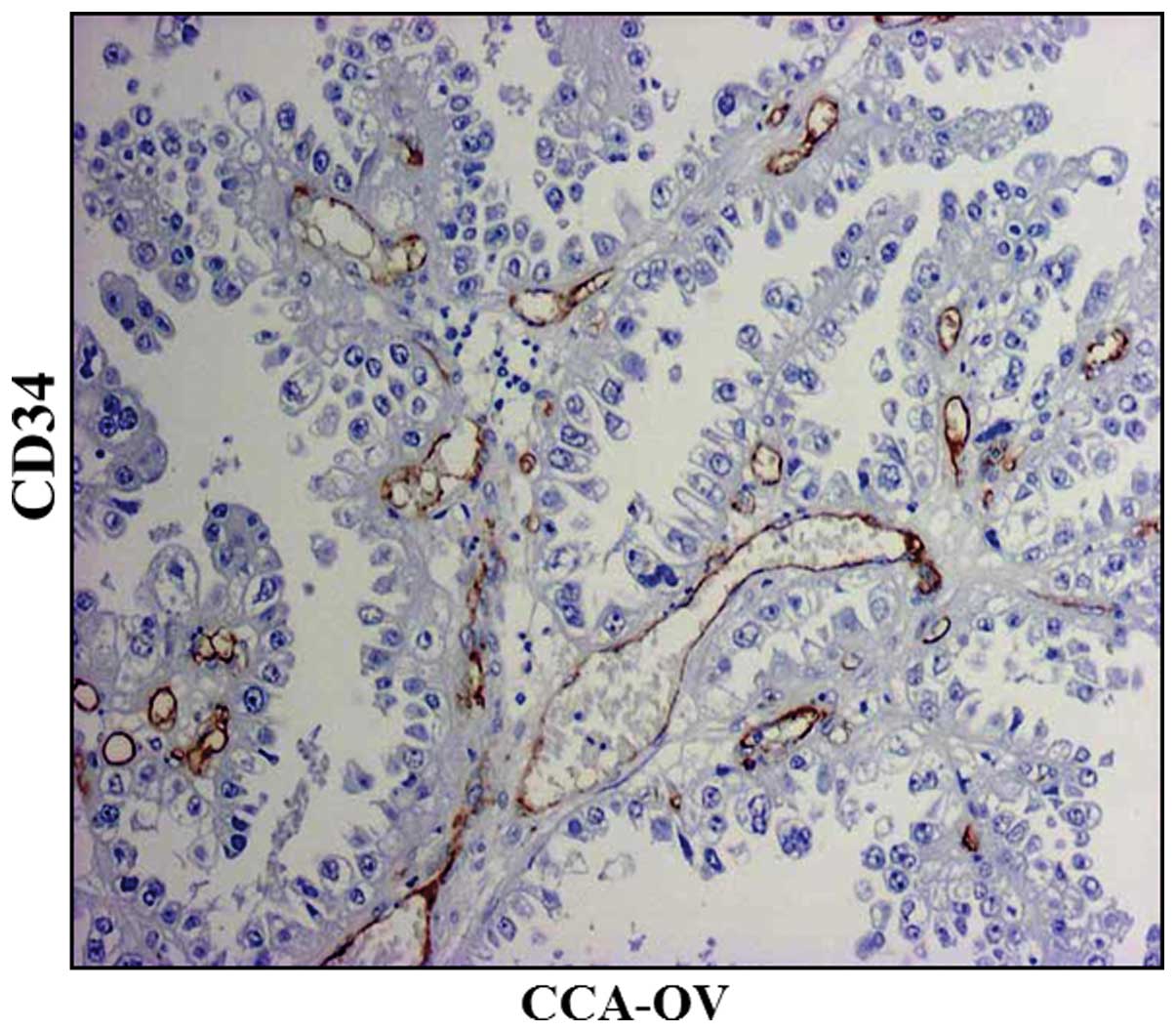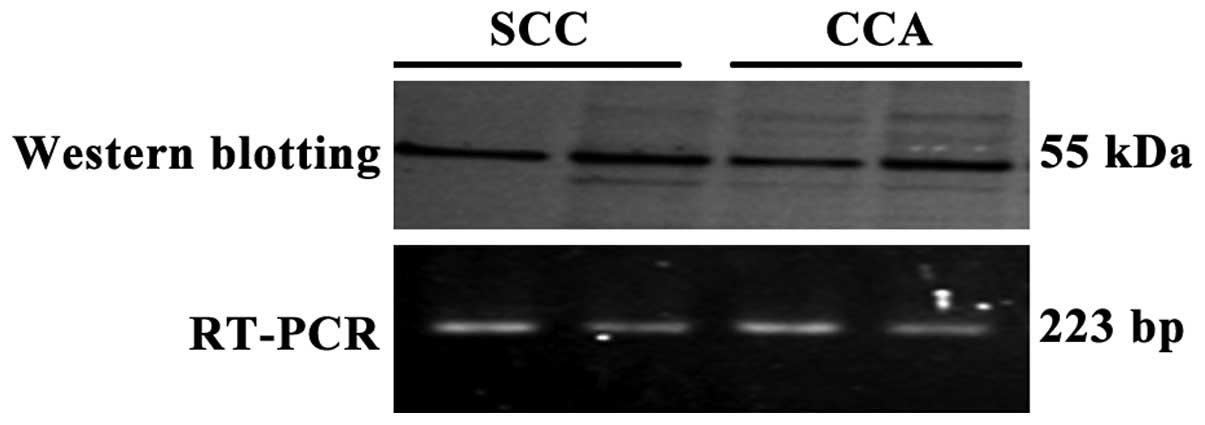|
1
|
Haraguchi M, Miyadera K, Uemura K,
Sumizawa T, Furukawa T, Yamada K, Akiyama S and Yamada Y:
Angiogenic activity of enzymes. Nature. 368:1981994. View Article : Google Scholar : PubMed/NCBI
|
|
2
|
Miwa M, Ura M, Nishida M, Sawada N,
Ishikawa T, Mori K, Shimma N, Umeda I and Ishitsuka H: Design of a
novel oral fluoropyrimidine carbamate, capecitabine, which
generates 5-fluorouracil selectively in tumours by enzymes
concentrated in human liver and cancer tissue. Eur J Cancer.
34:1274–1281. 1998. View Article : Google Scholar : PubMed/NCBI
|
|
3
|
Furukawa T, Yoshimura A, Sumizawa T,
Haraguchi M, Akiyama S, Fukui K, Ishizawa M and Yamada Y:
Angiogenic factor. Nature. 356:6681992. View Article : Google Scholar : PubMed/NCBI
|
|
4
|
Dushinsky R, Pleven E and Heidelberger C:
The synthesis of 5-fluoropyrimidines. J Am Chem Soc. 79:4559–4560.
1957. View Article : Google Scholar
|
|
5
|
Heidelberger C, Chaudhuri NK, Danneberg P,
Mooren D, Griesbach L, Duschinsky R, Schnitzer RJ, Pleven E and
Scheiner J: Fluorinated pyrimidines, a new class of
tumour-inhibitory compounds. Nature. 179:663–666. 1957. View Article : Google Scholar : PubMed/NCBI
|
|
6
|
Nakajima T, Kinoshita T, Nashimoto A,
Sairenji M, Yamaguchi T, Sakamoto J, Fujiya T, Inada T, Sasako M
and Ohashi Y: National Surgical Adjuvant Study of Gastric Cancer
Group: Randomized controlled trial of adjuvant uracil-tegafur
versus surgery alone for serosa-negative, locally advancer gastric
cancer. Br J Surg. 94:1468–1476. 2007. View
Article : Google Scholar : PubMed/NCBI
|
|
7
|
Kato H, Ichinose Y and Ohta M, Hata E,
Tsubota N, Tada H, Watanabe Y, Wada H, Tsuboi M, Hamajima N and
Ohta M: Japan Lung Cancer Research Group on Postsurgical Adjuvant
Chemotherapy: A randomized trial of adjuvant chemotherapy with
uracil-tegafur for adenocarcinoma of the lung. N Engl J Med.
350:1713–1721. 2004. View Article : Google Scholar : PubMed/NCBI
|
|
8
|
Akasu T, Moriya Y, Ohashi Y, Yoshida S,
Shirao K and Kodaira S: National Surgical Adjuvant Study of
Colorectal Cancer: Adjuvant chemotherapy with uracil-tegafur for
pathological stage III rectal cancer after mesorectal excision with
selective lateral pelvic lymphadenectomy: A multicenter randomized
controlled trial. Jpn J Clin Oncol. 36:237–244. 2006. View Article : Google Scholar : PubMed/NCBI
|
|
9
|
Kato T, Ohashi Y, Nakazato H, Koike A,
Saji S, Suzuki H, Takagi H, Nimura Y, Hasumi A, Baba S, et al:
Efficacy of oral UFT as adjuvant chemotherapy to curative resection
of colorectal cancer: Multicenter prospective randomized trial.
Langenbecks Arch Surg. 386:575–581. 2002. View Article : Google Scholar : PubMed/NCBI
|
|
10
|
Kasumi F, Yoshimoto M, Uchino J, Abe R,
Nomura Y, Sugimachi K, Nakazato H and Abe O: Meta-analysis of five
studies on tegafur plus uracil (UFT) as post-operative adjuvant
chemotherapy for breast cancer. Oncology. 64:146–153. 2003.
View Article : Google Scholar : PubMed/NCBI
|
|
11
|
Hirashima Y and Shirao K: Predicting drug
efficacy-fluorinated pyrimidines (fluorouracil, S-1 and
capecitabine). Gan To Kagaku Ryoho. 39:1603–1607. 2012.(In
Japanese). PubMed/NCBI
|
|
12
|
Yamamoto K, Noda K, Hatae M, Kudo T,
Hasegawa K, Nishimura R, Honjo H, Yajima A, Sato S, Mizutani K, et
al: Effects of concomitant use of doxifluridine, radiotherapy and
immunotherapy in patients with advanced cervical cancer. Oncol Rep.
8:273–277. 2001.PubMed/NCBI
|
|
13
|
Piver MS, Rose PG and Freedman MF: Change
in International Federation of Gynecology and Obstetrics staging.
Am J Obstet Gynecol. 1988 Mar;158(3)1678–679. View Article : Google Scholar : PubMed/NCBI
|
|
14
|
Noda K, Teshima K, Ikeda M, Sugawa T,
Yamagata S, Sekiba K, Kohno I, Kaneshige E, Sawaragi I, Matsuoka I,
et al: Phase II study of UFT in cancer of the uterine cervix. Gan
To Kagaku Ryoho. 12:900–906. 1985.(In Japanese). PubMed/NCBI
|
|
15
|
Fujii S, Kitano S, Ikenaka K and Shirasaka
T: Effect of coadministration of uracil or cytosine on the
anti-tumor activity of clinical doses of
1-(2-tetrahydrofuryl)-5-fluorouracil and level of 5-fluorouracil in
rodents. Gan. 70:209–214. 1979.PubMed/NCBI
|
|
16
|
Ikenaka K, Shirasaka T, Kitano S and Fujii
S: Effect of uracil on metabolism of 5-fluorouracil in vitro. Gan.
70:353–359. 1979.PubMed/NCBI
|
|
17
|
Noda K, Ohashi Y, Sugimori H, Ozaki M,
Niibe H, Ogita S, Kohno I, Hasegawa K, Kikuchi Y, Takegawa Y, et
al: Phase III double-blind randomized trial of radiation therapy
for stage IIIb cervical cancer in combination with low- or
high-dose Z-100: Treatment with immunomodulator, more is not
better. Gynecol Oncol. 101:455–463. 2006. View Article : Google Scholar : PubMed/NCBI
|
|
18
|
Gynecologic Oncology Trial and
Investigation Consortium, . LUFT Trial: A randomized phase III
trial of long UFT administration following curative radiation
therapy for locally advanced cervical cancer. Version 1.20. 2010,
http://www.gotic.jpApril 4–2016
|
|
19
|
Nakanishi Y, Kodama J, Tokumo K, Seki N,
Miyagi Y, Yoshinouchi M, Okuda H and Kudo T: The expression of
platelet-derived endothelial cell growth factor/thymidine
phosphorylase associates with angiogenesis in epithelial ovarian
cancer. Int J Clin Oncol. 2:19–23. 1997. View Article : Google Scholar
|
|
20
|
Suzuki M, Usui N, Furugen Y and Mitsuhasi
N: Pyrimidine nucleoside phosphorylase activity in normal tissues
of the uterus and ovary and in benign and malignant lesions of
these organs. Int J Clin Oncol. 6:19–24. 2001. View Article : Google Scholar : PubMed/NCBI
|
|
21
|
Fujimoto J, Ichigo S, Sakaguchi H, Hirose
R and Tamaya T: Expression of platelet-derived endothelial cell
growth factor (PD-ECGF) and its mRNA in ovarian cancers. Cancer
Lett. 126:83–88. 1998. View Article : Google Scholar : PubMed/NCBI
|
|
22
|
Seidman JD, Cho KR, Ronnett BM and Kurman
RJ: Surface epithelial tumors of the ovaryBlaustein's Pathology of
the Female Genital Tract. Kurman RJ, Ellenson LH and Ronnett BM:
6th. Springer US; New York, NY: pp. 701–758. 2011
|
|
23
|
Ogawa S, Kaku T, Kobayashi H, Hirakawa T,
Ohishi Y, Kinukawa N and Nakano H: Prognostic significance of
microvessel density, vascular cuffing and vascular endothelial
growth factor expression in ovarian carcinoma: A special review for
clear cell adenocarcinoma. Cancer Lett. 176:111–118. 2002.
View Article : Google Scholar : PubMed/NCBI
|
|
24
|
Satou S, Nakajima A and Koyanagi Y:
PhNPase-expressing macrophage and angiogenesis in colorectal
cancer. Nippon Daicho Komonbyo Gakkai Zasshi. 51:267–275. 1998.
View Article : Google Scholar
|
|
25
|
Konishi I: Angiogenic factors in
gynecological cancer. Acta Obstet Gynaecol Jpn. 52:1222–1227.
2000.
|
|
26
|
Ogawa K, Katsube T, Konno S, Miura K,
Wakasugi S, Watanabe T, Shimakawa T, Ishikawa S, Naritaka Y, Yagawa
H, et al: Influence of intratumor administration of OK-432 on the
tumor selectivity of 5′-DFUR. Gan To Kagaku Ryoho. 22:2095–2100.
1995.(In Japanese). PubMed/NCBI
|
|
27
|
Takao S, Akiyama SI, Nakajo A, Yoh H,
Kitazono M, Natsugoe S, Miyadera K, Fukushima M, Yamada Y and Aikou
T: Suppression of metastasis by thymidine phosphorylase inhibitor.
Cancer Res. 60:5345–5348. 2000.PubMed/NCBI
|
|
28
|
Mori S, Takao S, Ikeda R, Noma H, Mataki
Y, Wang X, Akiyama S and Aikou T: Thymidine phosphorylase
suppresses Fas-induced apoptotic signal transduction independent of
its enzymatic activity. Biochem Biophys Res Commun. 295:300–305.
2002. View Article : Google Scholar : PubMed/NCBI
|
|
29
|
Overman MJ, Varadhachary G, Kopetz S,
Thomas MB, Fukushima M, Kuwata K, Mita A, Wolff RA, Hoff PM, Xiong
H and Abbruzzese JL: Phase 1 study of TAS-102 administered once
daily on a 5-day-per-week schedule in patients with solid tumors.
Invest New Drugs. 26:445–454. 2008. View Article : Google Scholar : PubMed/NCBI
|















